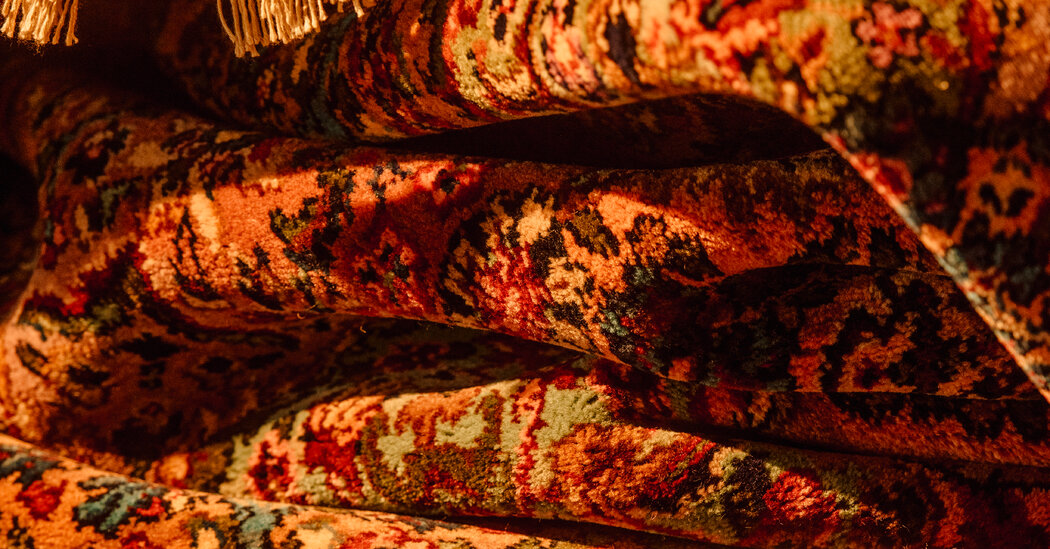
Mr. Shropshire’s own Karastan rug has been in storage at the shop ever since his family welcomed a new puppy to their home last year. (“Dogs, cats and kids keep us going,” he said of the rug-cleaning business.) Mr. Shropshire’s shop has had ties to the people who worked at the mill, less than a mile away, since Scotty’s opened in 1974. But Karastan has been in these parts far longer than that.
A Cadillac of Carpets
In 1917, when Marshall Field & Co. moved its underwear and bedspread manufacturing from Illinois to the town of Leaksville, which consolidated with two other towns to form Eden in the 1960s, it was to be closer to non-unionized labor and cotton, a raw material used in many of its products. Though known today for its former retail empire, Marshall Field had an equally important wholesale business that supplied its stores and others.
The company already had mills nearby, and the new site — a former furniture factory along the Dan River — offered plenty of water for textile finishing. But the new mill needed land for expansion and chose a Black neighborhood nearby, displacing much of the population. The expanded mill was built, along with 166 cottages, to house what at the time was an all-white work force. Textile mills were segregated until the 1960s, and Black workers were excluded from production jobs until then.
When it opened in 1921, the mill was a branch of Marshall Field’s Homecrest Rug division. An engineer and inventor employed by the company, Eugene Clark, began experimenting with the Axminster broadlooms. He modified the loom so that it wove through the back, simulating the look of a hand-knotted rug.
According to company lore, the first rug came off one of these customized Axminsters at 2:02 p.m. on April 8, 1928, and its resemblance to a handwoven Persian carpet was so remarkable that it was called a “mystery rug.” The new rugs were given a name that played up the enigma — Karastan — an invented place that, to American ears, surely sounded more like the source of a Persian-style rug than Leaksville, N.C.
By 1931, the mill’s engineers had transformed 52 working Axminster looms, reproducing patterns that were copied by Karastan’s designers from handmade originals. The rugs were named after famed rug-producing regions in Iran (Ispahan, Kirman, Sarouk), Azerbaijan, Armenia and Turkey (Oushak, Turkoman), along with Karastan’s unique number coding — the first Karastan designs, or what is now called “the original Karastan collection,” are the brand’s 700 series.




